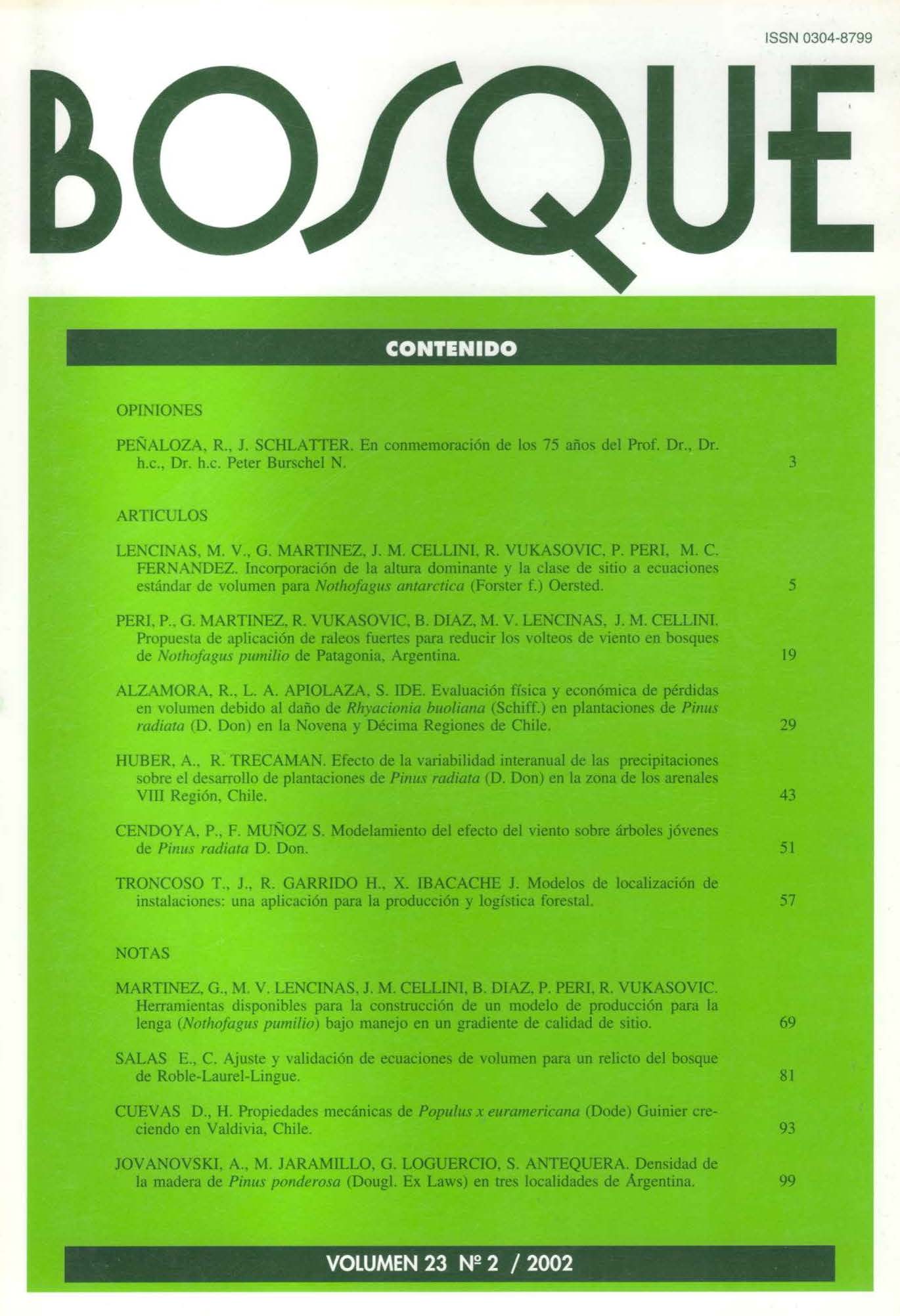Main Article Content
Dec 31, 2002
Abstract
Lenga forests are the main wood resource in southern Argentina and Chile. It is the most studied native species, with enough information of ecology, biometry and silviculture to define timber prediction and forest management models for regional forest planning. General Forest Planning is designed to achieve a continuous and sustainable supply of logs, but first it is necessary define the land use capability (territorial planning) and determine several timber production alternatives. Therefore, it is necessary to have reliable models that offer adequate information for timber prediction. The aim of this work was to develop a yield model for Nothofagus pumilio along a site quality range based on methodologies and models proposed previously in the literature. To fit a production model, five assumptions were defined (silvicultural system, objectives of forest management, forest growth, yields and livestock browsing), and methodologies and biometric models selected (height growth model, site index classification, DBH growth models, stand density index and thinning level diagrams, rotation length, total volume and timber production of the forest defined along a site quality range). From these models, a silvicultural management system was defined, and their outputs were analyzed from biological and practical use perspectives. This system has five intermediate practices (three thinning levels with secondary products and two thinning levels with timber products) and a final cut. The evolution of a stand without silviculture was also analyzed as control. Finally, the outputs of the forest production model (yields, growth and timber production), over time for different silviculture treatments are presented. The range of timber production varied from 435 m3/ha of logs without bark over 150 years in the best site class to 81 m3/ha over 213 years in a poorest site class.


